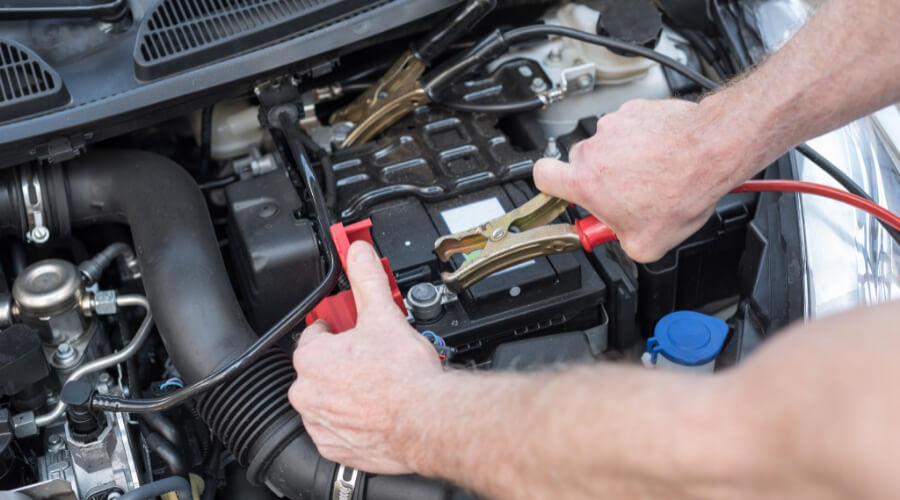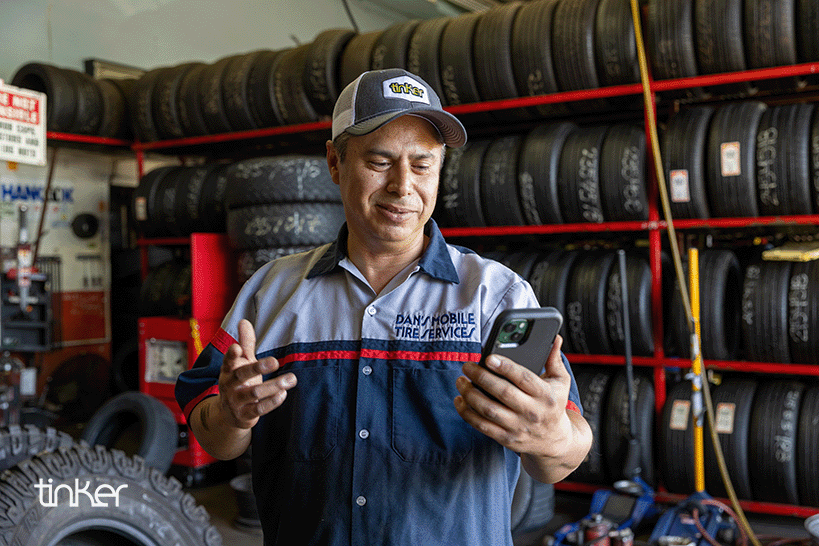How To Jump Start Your Car Safely
It can happen to anyone. You walk out to the garage to start your day and your car battery is dead. Maybe you left the headlights on overnight or the battery is reaching the end of its usable life. It doesn’t matter at this point because you just need to get the engine started so you can get back on the road.
Time for a jump start.
A jump start is when you start your car’s engine using the energy from a second car’s good battery to momentarily boost the power of your “dead” battery. This is done by using a set of jumper cables to link the functional car’s battery to the depleted battery of your car.
It’s easy, and it only takes a few minutes, but there are risks involved. Don’t sweat it. Even if you don’t have any experience, it’s well within your capability to jump start your car safely by following the seven simple steps outlined below.
Step 1 - Be Prepared
You need a set of jumper cables. Any auto parts or big-box store will have them and they’re not very expensive, usually costing between $15 and $50. Keeping a set in your trunk – or at very least, your garage – is always a good idea. Some sets come with a handy carrying case, which makes storing them easier.
Jumper cables also come in a variety of lengths, ranging from 12 to 25 feet. The longer sets are an advantage when the two vehicles can’t get very close to one another.
Step 2 - Know Your Connection Points
Your car’s battery will most often be found under its hood, but not always, so it’s a good idea to familiarize yourself with the battery connection points of your car.
These connection points are usually located on the battery itself. But not always. Some cars have specific terminals under the hood you should use instead. The owner’s manual for your car will show you where to connect the jumper cables.
Next, you’ll need to ensure these terminals aren’t loaded up with corrosion. If they are, you’ll need to clean off the corrosion before connecting the jumper cables.
If the battery terminals are dirty or a bit rusty you can clean them with a wire brush. But don’t attempt to jump start a car that has a battery that is leaking, frozen or obviously damaged. If any of these scenarios apply, skip the jump start and call for a tow truck.
Step 3 - Orient the Healthy Car
Before you make any connection with the jumper cables, position the functioning car in such a way that the jumper cables will comfortably reach the battery terminals of both cars.
Set the parking brakes and switch off the car’s engine.
Lay out the jumper cables and ensure that the alligator clips at their business ends are not touching each other or any metal object. This will ensure you don’t inadvertently create a path for current to create a spark when you start connecting the jumper cables to the car. This is important in order to avoid creating a shock hazard to you or components under the hood.
Step 4 - Identifying Positive and Negative
Your car’s battery will have two terminals, one labeled with a “+” (positive) symbol, the other with a “-” (negative) symbol. The positive terminal will typically have a red cover and/or cable on it. The negative terminal will usually have a black cable on it. If the color code isn’t clear, go by the symbols.
Now, figure out the locations of the functioning car’s positive and negative terminals.
It is extremely important not to mix up positive and negative on either car, as you could significantly damage the electrical systems of both cars, which will be an expensive mistake. Be certain you can clearly identify each terminal. If you’re not sure, don’t attempt the jump start.

Step 5 - Proper Sequence to Connect the Jumper Cables
Making the connections in the sequence below will minimize the risk of short-circuiting the healthy car’s battery:
1) Connect the red alligator clip to the dead car’s positive terminal.
2) Connect the other red alligator clip to the functioning car’s positive terminal.
3) Stay at the functioning car and connect the black alligator clip to its negative terminal.
4) Return to the dead car and connect the other black alligator clip to a metal unpainted bracket or bolt that is located away from the battery. If your owner’s manual instructs you to use a specific remote terminal here, follow those instructions.
NOTE: do not connect the alligator clip directly to the dead battery’s negative terminal. It’s an unlikely scenario, but batteries can emit flammable hydrogen gas if they become over-charged, and a small spark that commonly occurs when handling jumper cables could ignite the gas. So, play it safe and avoid using the dead battery’s negative terminal.
Step 6 - Starting the Engines
Start and run the functioning car’s engine with its transmission in Park. Then, attempt to start the engine of the dead car. If it cranks slowly or not at all, turn it off and let the healthy car run for about two minutes.
During this period, it can help to rev the engine of the functioning car. This will turn its alternator faster, producing more charging current for the dead battery. Then, attempt to start the dead car’s engine again. If it starts, you’re in the home stretch. Keep both cars connected and running for about two minutes to make sure the dead battery is sufficiently charged.
Step 7 - Removing the Jumper Cables
Remove the jumper cables in the reverse of the sequence outlined above.
4) Remove the black alligator clip from the metal object on the car being charged
3) Remove the black alligator clip from the negative terminal of the functioning vehicle.
2) Remove the red alligator clip from the functioning car’s positive terminal.
1) Remove the red alligator clip from the positive terminal of the car being charged.
Don’t let the alligator clips touch each other or any metal object when you’re doing this in order to avoid creating a shock hazard to you or components under the hood.
If the formerly-dead car’s engine immediately dies when you remove the negative alligator clip, reconnect it and restart its engine. Let both cars run for a longer period with the jumper cables attached to help give the dead battery more juice. And if the engine dies again, it probably means the dead battery will not hold a charge and needs to be replaced.
Once it’s running, and you’ve removed the jumper cables, the engine’s alternator will produce the current needed to keep the car’s electrical devices running while it recharges the battery. so make sure not to switch off your engine for at least fifteen minutes.
After you’ve put the jumper cables away, buttoned up any protective terminal covers, closed the hoods and thanked the owner of the healthy car for their assistance, you can drive the formerly-dead car normally.


